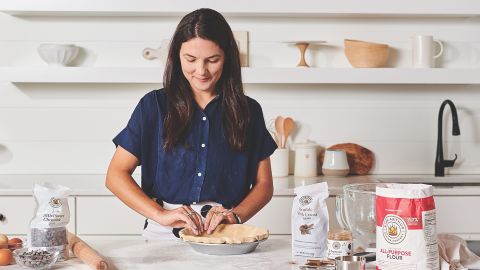
CNN
—
Perhaps the most memorable recipe in “The Suffrage Cook Book,” published in 1915 by the Equal Franchise Federation of Western Pennsylvania is “Pie for a Suffragist’s Doubting Husband,” which instructs: “Mix the crust with tact and velvet gloves, using no sarcasm, especially with the upper crust.” The introduction to the volume, whose message was votes for American women, asserts that “the dining room is a greater social factor than the drawing room.”
The book’s intended purpose – to make good food while transforming the dinner table into a place for political change and the kitchen into a revolutionary space – makes it especially worthy of mention by Rossi Anastopoulo in the introduction of her recent book, “Sweet Land of Liberty: A History of America in 11 Pies.” (Disclosure: I also wrote about this cookbook in my dissertation, so I’m biased.)
The tableau that opens and sets the tone for Anastopoulo’s book is iconic: A Woolworth’s lunch counter in Greensboro, North Carolina on February 1, 1960, where a group of young people sat down and one of them, Ezell Blair Jr., requested coffee and cherry pie. Blair didn’t get his pie until over a decade later, when he returned to Woolworth’s for a reunion with his comrades. By that time, he had changed his name to Jibreel Khazan and the civil rights movement to which he and his friends had been crucial contributors had shaken America to its foundations.
As Anastopoulo, a Los Angeles-based, award-winning food writer and blog editor for King Arthur Baking Company, writes, “Pie is, needless to say, not the most natural medium through which to navigate American history.” But you’d never know it from reading her book, which reveals how many pivotal moments about what it means to be an American (and who gets to be one) are connected to pie, from the apples grown at Thomas Jefferson’s Monticello to the integration of a lunch counter.
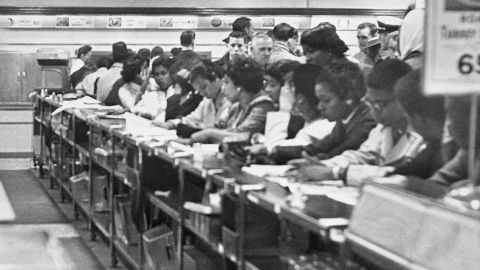
She quotes one writer who claimed that “to banish pie from the American dining table would be like banishing the American constitution.” Hyperbole? Sure. But after reading this book, you won’t be able to think about the founding or history of the United States without apple or pumpkin pies as the part of the story, I promise you.
Each of the chapters in “Sweet Land of Liberty” is devoted to the cultural history of a particular pie and concludes with a recipe to prepare it. Pie is versatile here: it’s a vehicle for establishing national identity – and for resisting its hegemony. The chapter on the bean pie, popularized by the Nation of Islam to help make diet a vehicle of resistance to White power, for instance, includes a recipe from Lana Shabazz, Muhammad Ali’s chef, adapted from her book, “Cooking for the Champ.”
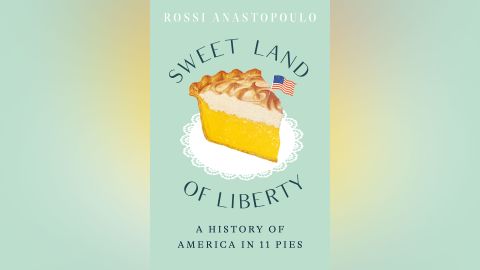
This book makes clear that the story of pie in America isn’t always a happy one, particularly this time of year, when pumpkin pie takes center stage. Anastopoulo teases out the history of how Western colonization of Indigenous peoples in North America produced the “cultural mashup” that became pumpkin pie. Pumpkin, a staple food for native populations, was blended with an English recipe for pie and combined with island sugar. She urges readers to “peel back the layers of” pumpkin pie, “this seemingly charming cross-cultural exchange,” and “to examine the deeper implications of European colonization in the Americas.”
But it’s not about NOT eating pumpkin pie, she says. It’s about talking more about what it means before you go in for seconds. “The dinner table is always powerful, but Thanksgiving, it’s extra,” Anastopoulo told me, “so it’s important to think about what you’re using it for.”
Pie is important, but it’s also delicious – and fun. Dive into “Sweet Land of Liberty” to learn how pecan pie became America’s sweetheart. Meet the Pie King of Hollywood’s golden era, who infused pie with silver screen glamour and celebrity. Discover pie as a political weapon – metaphorical, in the hands of anti-Equal Rights Amendment organizer Phyllis Schlafly (who made quiche an art form of lobbying) and literal, by pie-tossing activists in America and internationally. Anastopoulo traces the early years of pieing from the Yippies to more recent forays, such as the Biotic Baking Brigade’s 2004 cookbook, “Pie Any Means Necessary.”
Anastopoulo is here to make sure you know (if you didn’t already) that there’s nothing simple about being “as American as apple pie.” Her two rules for this dish: you must use Granny Smith apples and “carve the name of your loved one in the crust – it’s the best way to show how much you truly care.” (Hers bear the name of her father, Akim.) Perhaps Jane Austen’s word on apple pies says it all: Anastopoulo quotes Austen’s letter to her sister, Cassandra, in which she wrote, “Good apple pies are a considerable part of our domestic happiness.”
Anastopoulo spoke with CNN Opinion about her book and pie in general. As she says in the book, “it’s time to dig in.”
This interview has been edited for length and clarity.
CNN: How did pie become your medium for this kind of social history?
Rossi Anastopoulo: I have a long personal relationship with pie. As I write in the book, my dad has requested an apple pie for his birthday as long as I can remember. I grew up making him apple pies. I’ve always been a baker, and it was my favorite (pie) to bake. So pie always had a very special, personal place. In college at UNC, I was studying foodways, particularly in the South, and food culture, and I started thinking about pie again. I was thinking, “Is there a deeper story here?”
One thing I write about in the book is how pie is a very malleable dish, you can really adapt it to the circumstances that you’re in. Because of that, pie recipes can change. And how one person makes a pie recipe at one point can be very different than how someone makes it hundreds of years later. I found that pie, no pun intended, is baked into American culture.
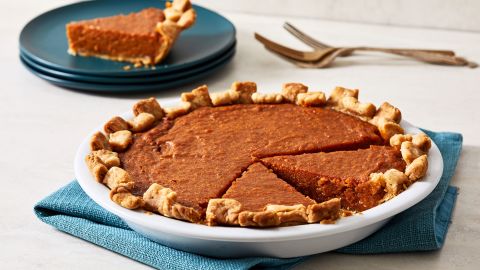
Because so many other people from hundreds of years ago and through today have the same kind of personal pie connections that I do, it really has a certain nostalgia that resonates very deeply. It really is a special kind of dish for those reasons.
CNN: Do you remember the first pie you ever baked?
Anastopoulo: I can’t remember the first one specifically, but I have to think it was that October apple pie for my dad. And it was definitely with the Pillsbury rollout crust, which I’m embarrassed to think about now, but that was how I got started. We still have that same cookbook. It was a collection of Charleston recipes, because that’s where I’m from, and I’ve kind of adapted it since then.
CNN: If you could sit in a room alone and eat any of the pies in your book, which one would it be? And if you were going to a dinner party or a Friendsgiving, which pie would you take for a group?
Anastopoulo: Oh my God, that’s a great question. I think that if I could just sit and eat any, it would be quiche. Some people argue it’s not a pie, even though I consider it a pie. Quiche is so good. I have such a sweet tooth that it’s kind of crazy that I think I’d pick the savory one in my book, but it’s just delicious. I’ve never had a bad quiche, if there even is one.
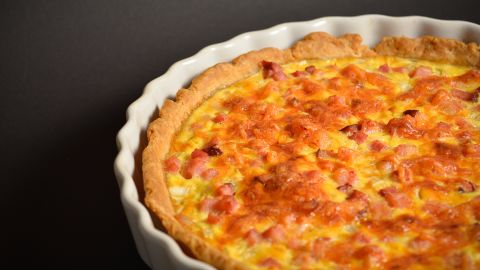
As for the one to bring, I would actually swerve and go with the mock apple pie, because it’s so fun to serve that one to other people and have them play a party game, “What is this filling made out of?” I’ve done that with people, and they can never guess it. When you reveal that it’s made out of crackers, their mind is blown. So it’s very fun, a good conversation piece, and it’s genuinely delicious.
CNN: Particularly at this time of the year, a lot of people will be baking and eating pumpkin pie. You write that this dish does more than just reflect American culture or the myths built around our national story. You really show in the book how pumpkin pie itself helped to shape some of those narratives. Could you talk about that and what pumpkin pie means to you now, on the far side of doing this work?
Anastopoulo: I come from a family where we had pumpkin pie every Thanksgiving. In the course of writing this book, I did start to have very difficult conversations about why we have it, what it means to have it. Can you eat this pie? I don’t think we shouldn’t eat this pie – or shouldn’t eat any particular dish. But can you eat it in a vacuum? Can you eat it without understanding and acknowledging the history behind it? Without doing work beyond the dinner table to engage with its legacy and hopefully work toward a better future and a reconciliation of the harm that’s been caused to Native and Indigenous people?
It’s not that the pie itself is problematic or bad, but like all of the pies in this book, it’s more a vessel and a lens through which to look at these broader stories.
Pumpkin and squash are indigenous to North America. It was a staple food source for a lot of Indigenous populations. And then when European colonizers came here, and then they transformed it into pumpkin pie, into this very Western European, British-style dish. So in some ways, it is a metaphor for the taking of native land, taking it and reshaping it into something else that develops from this colonizing culture.
And pumpkin pie in America develops along kind of the same track as Thanksgiving. The thing about Thanksgiving is it’s a manufactured holiday created in part to establish a national culture. And food is so powerful in building a culture, especially for our country, which was then still fairly new. So pumpkin pie becomes a representation of Thanksgiving and a created American ideal and American myth, more broadly.
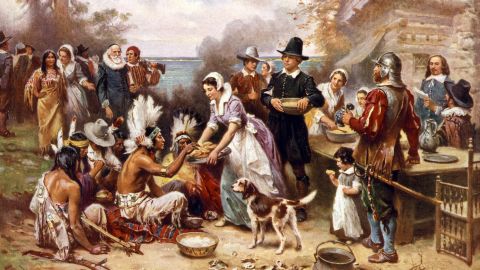
Thankfully, we’re having (as a country) more honest and transparent conversations about the Thanksgiving myth that many of us were told growing up. I hope that we can talk about pumpkin pie that same way too, and fold that into a reexamination of this holiday that we celebrate every year
CNN: How did you decide on the pumpkin recipe you do include in the book, and where did it come from?
Anastopoulo: I got to the end of that chapter, and thought it would feel so weird if there were just the traditional pumpkin pie recipe at the end. Again, I don’t think that people shouldn’t bake or eat it. But it would have felt very disingenuous to put them right next to each other in this book. So the recipe that’s in there (for maple pumpkin pudding) is something that I just worked on and pulled together myself. It’s based on ingredients that are pre-colonial and also ingredients that are native to North America. And in some way, it too is a representation of an ideal, in the same way that kind of classic pumpkin pie is.
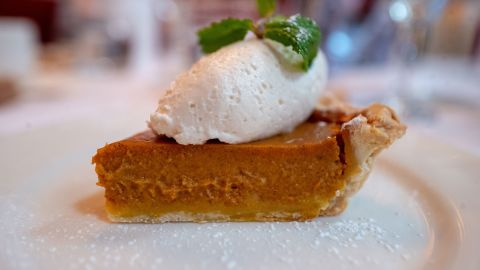
I hope that making and eating it can be an opportunity to think and engage more deeply with the foods that we eat and why we eat them. And to think about why certain recipes look the way they do and why they call for certain ingredients. We should be more honest about that and have those conversations.
CNN: I think it’s safe to say the star of your book is apple pie. You’ve alluded to what it means to you personally. How do you feel about apple pie now, having done this deep dive into its historical and national significance in the book?
Anastopoulo: It’s so funny to have been making it my whole life and then to do this deeper research. Tracing how people turned it into this very patriotic, nationalistic symbol. It’s been this broader ideal about what it means to live in this country and what it means to be American. And it’s been used to assert dominance and power.
And then, also, last month I made it for the first time since the book published last month, and it was still the same apple pie recipe. I made it for my dad and he talked about how much he loved it, and we ate it exactly the same way. And it was just so funny to balance that weight you have in the history of this dish and then to have the exact same very simple experience, and it didn’t feel any different, right?
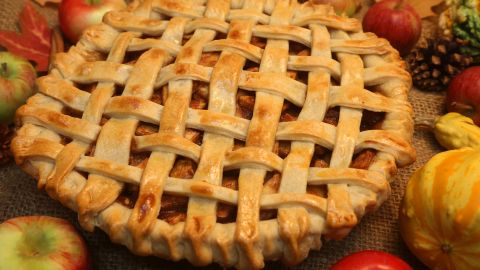
I think that goes to show that so many of these foods, perhaps apple pie more than any other, shatter that line between huge national symbol and individual personal pleasure. All of us have these individual relationships with these pies, and I think that’s what makes it so special – that it can be something very humble but also something that’s about much more than what’s in the pie dish at the same time.
CNN: How did you choose the recipes you include in the book and decide how to adapt them?
Anastopoulo: I wanted to pull them from the historical examples that were being discussed in the chapters themselves. Because that’s another unique thing about pie as history. We talk about, or read about, or write about this history, but then, you know, it’s not in the past. You can go bake it and eat it and engage with it directly in your kitchen and today.
So as I was researching, sometimes it was obvious which recipe it should be. For pecan pie, the whole chapter is about how Karo Corn Syrup kind of nationalized pecan pie. So of course, then you’re going to want to go bake the Karo Corn Syrup pecan pie recipe.
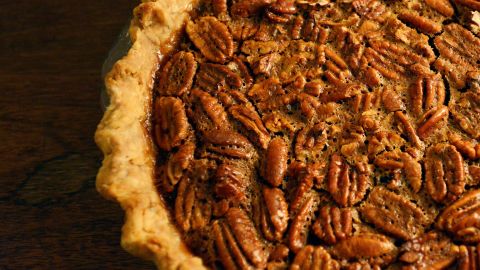
Similarly, for apple pie, the chapter is talking about how its evolution is like that of the United States of America, its developing and founding. So of course, it’s going to be Amelia Simmons’ pie from “American Cookery” (the first known cookbook written by an American, in 1796). For sweet potato pie, I wanted it to be either Malinda Russell’s or Abby Fisher’s. They wrote and published the first two cookbooks by Black chefs and cooks.
CNN: Your apple pie chapter delves into how crucial food was in establishing what it meant to be an American in the earliest years of the republic. Yet it’s not as if early American cookbooks like Amelia Simmons’ “American Cookery” are typically taught alongside figures from more male-dominated arenas who were invested in doing the same thing, like Thomas Jefferson or Washington Irving.
Anastopoulo: That’s a tale as old as time, this dismissal of cooking and baking and domestic labor more generally as less important. Patriarchal cultures often don’t think about cooking and recipe writing and cookbooks as important literature, though I’d argue cookbook writing is more difficult than writing other types of books because of the labor and knowledge and expertise that goes into it. And with something like “American Cookery,” what an incredibly influential piece of work and knowledge. What an incredible shift point between our role as a British colony and the establishment of our own culture and country and place.
CNN: When you think about it now, which one is a bigger influence in America: pie as protest or pie as cultural domination?
Anastopoulo: I think cultural domination, because the instances in which it’s used as protest exploit pie’s domination to leverage their protest, you know? And that’s perhaps why it becomes a powerful symbol in protest because of its dominant cultural status.
CNN: Do you have go-to holiday season pies – or, to blaspheme a little bit, non-pie desserts for the holidays that are your favorites?
Anastopoulo: I love key lime pie. I think key lime pie is kind of a great all-purpose pie, even if people associate it with the summer. If you’re having a heavy holiday meal, it’s a nice light, kind of acidic complement. It’ll actually, probably go really well with the kind of holiday foods you may be eating.
Plus, a bonus for key lime pie, it’s so easy to make. If you’re not as confident in your pie-making ability, get a pre-made crust. You mix three ingredients and put in the shell and that’s it. It’s a pie that’s hard to mess it up and it’s really good to have in your back pocket during the holidays.
For non-pie desserts, I just made melomakarona, which is a Greek honey cookie. Those are my sister’s favorite. They’re really good, they have clove, cinnamon, winter spices. Another holiday dessert that my family always requests is tiramisu. It’s like a good party dessert, easy to serve, very impressive looking, and so that’s another good one I’d recommend.
